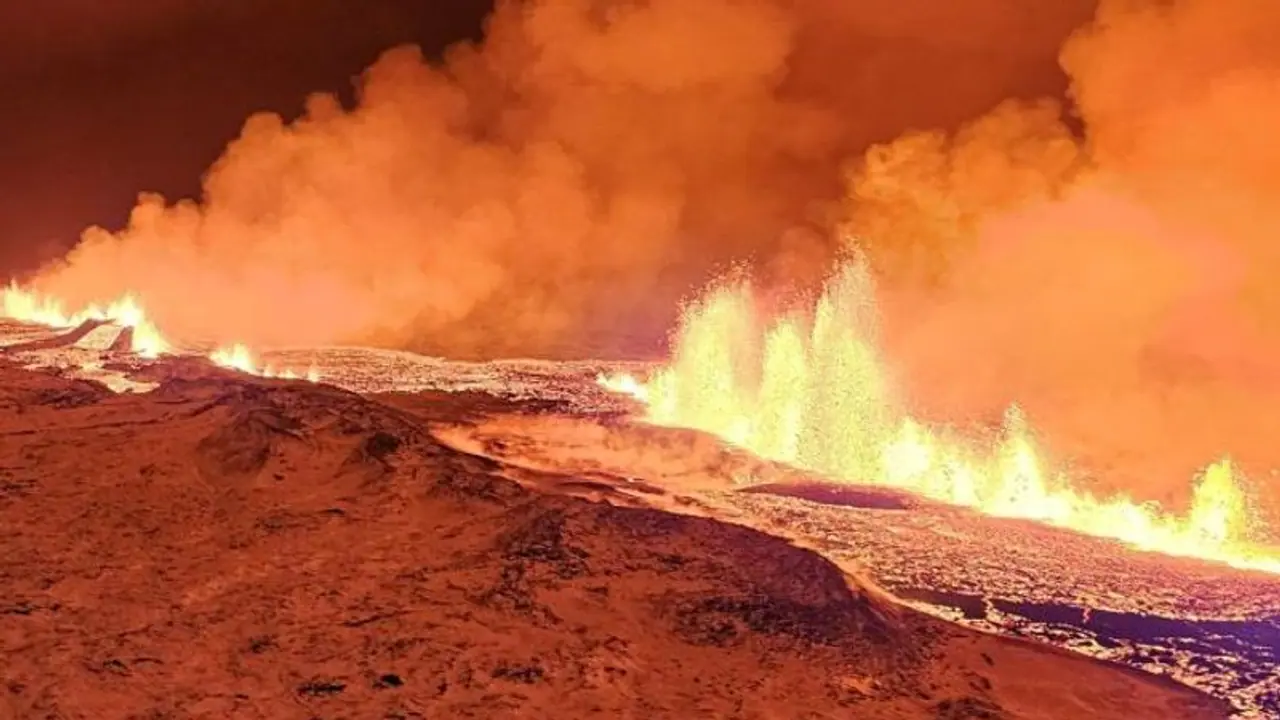The Icelandic Meteorological Office reported a decrease in eruption intensity, indicating a state of equilibrium. Evacuations had taken place in Grindavík earlier, with over 20,000 quakes recorded since October. A scientific evaluation is planned, while flight operations remain unaffected.
Iceland's meteorological office confirmed the eruption of a volcano on the Reykjanes Peninsula, a development that followed weeks of seismic activity along the southwestern coast. Grainy webcam footage captured the moment of eruption, displaying a flash of light illuminating the sky at 10:17 p.m. local time. The eruption's progression revealed magma, or semi-molten rock, spewing along the ridge of a hill.

Vidir Reynisson, Head of Iceland's Civil Protection and Emergency Management, described the eruption's magnitude, stating, "The magma flow seems to be at least a hundred cubic meters per second, maybe more. So this would be considered a big eruption in this area at least."
The Icelandic Meteorological Office issued an alert on its website, confirming the eruption's location north of Grindavík, approximately 3 km (1.8 miles) away from Hagafell. Citing seismic and GPS measurements, the Met Office noted a decrease in the volcanic eruption's intensity, emphasizing that this decline does not predict the eruption's duration but suggests a state of equilibrium is being reached—a pattern observed at the onset of recent eruptions on the Reykjanes Peninsula.
The eruptive fissure, stretching approximately 4 km, spans from the northern end just east of Stóra-Skógfell to the southern end east of Sundhnúk, with the southern edge approaching Grindavík by almost 3 km. The Icelandic Meteorological Office remains vigilant, maintaining direct communication with civil protection and response units in the affected area. A meeting of scientists is scheduled for tomorrow morning to assess the overnight developments of the eruption.
20,000 Quakes Since Late October
Warnings issued by local weather officials in November highlighted a "significant likelihood" of a volcanic eruption, supported by over 20,000 earthquakes recorded in the region since late October. Grindavík, a nearby fishing town, initiated evacuations on November 10, successfully relocating approximately 3,700 residents, as confirmed by Bjarni Benediktsson, the Minister of Foreign Affairs at the time.
Iceland's Volcanic History
Iceland, situated above a volcanic hot spot in the North Atlantic, experiences eruptions roughly every four to five years. Notable in recent history was the disruptive 2010 eruption of the Eyjafjallajokull volcano, which spewed ash clouds into the atmosphere, grounding flights across Europe for days due to concerns about potential damage to airplane engines.
Foreign Minister Bjarne Benediktsson reassured the public via social media platform X (formerly Twitter), stating that there are "no disruptions to flights to and from Iceland, and international flight corridors remain open."
In response to the eruption, a coast guard helicopter is set to determine the precise location and size of the eruption while measuring gas emissions. Grindavík, with a population of 3,400, is situated on the Reykjanes Peninsula, approximately 30 miles southwest of the capital, Reykjavik, and in close proximity to Keflavik Airport, Iceland's primary international flight facility.
